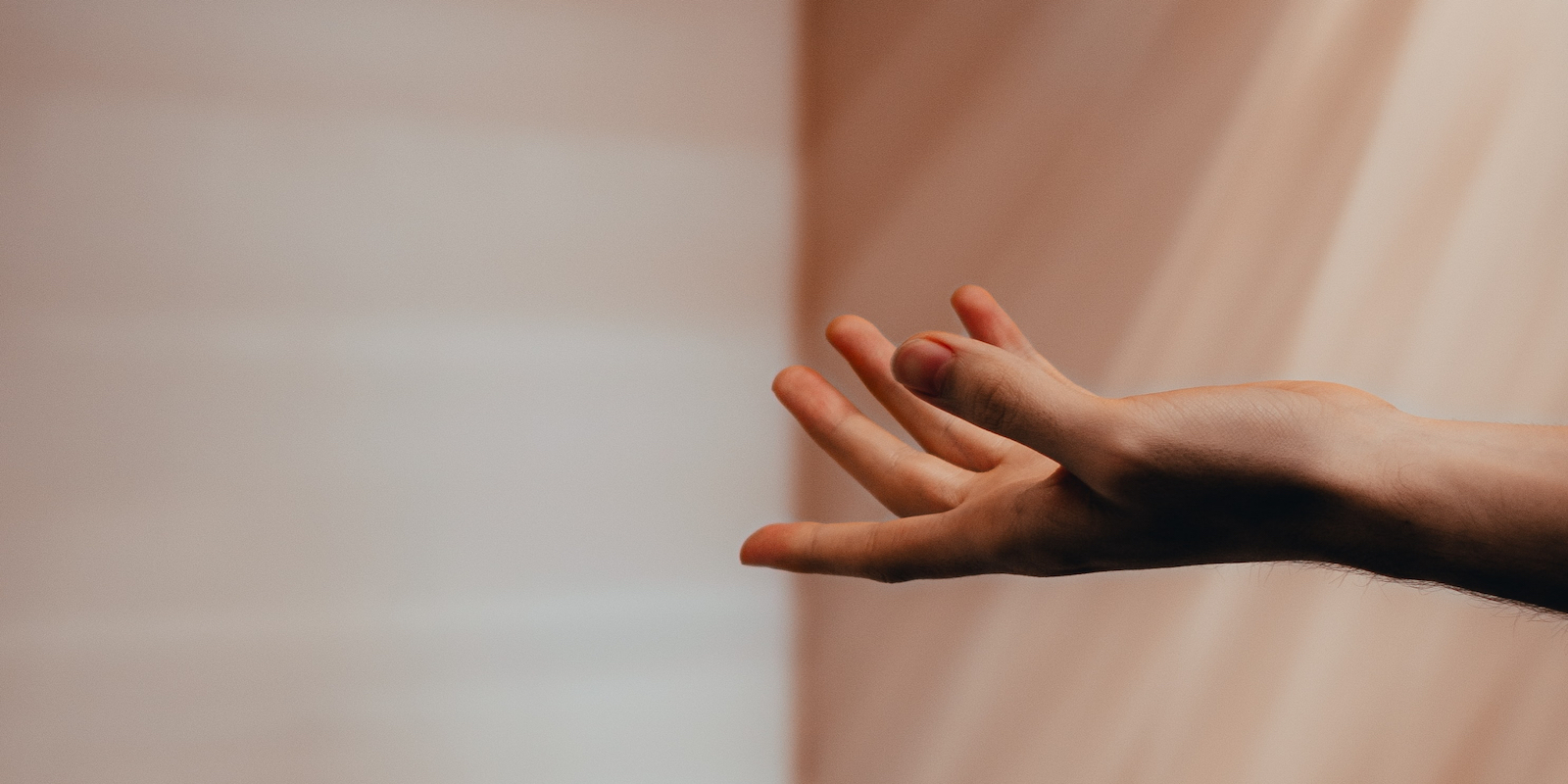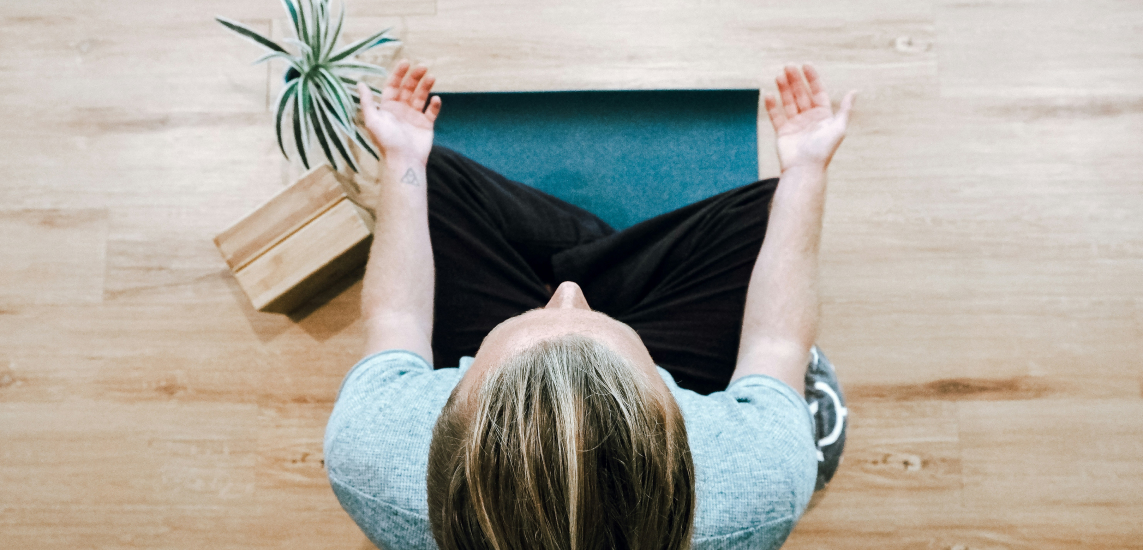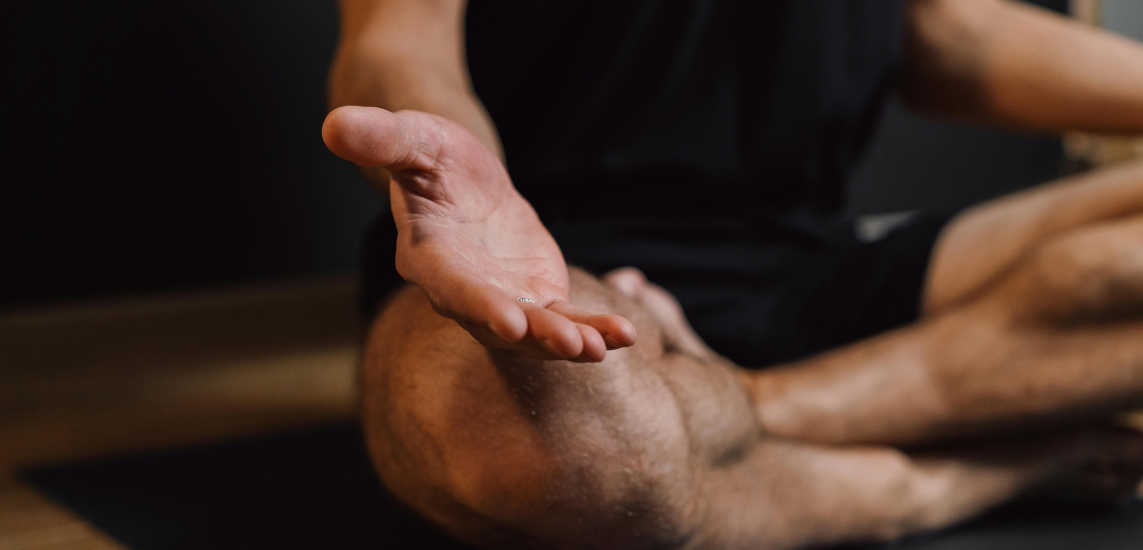Senior yoga teacher and therapist with Yoga Australia, Celia Roberts, explains the effects of meditation for pain relief and how yoga contributes to a life with less pain.
Meditation For Pain Relief: A Question Of Perspective
Pain is something that we all have experienced before. Pain is a common symptom for most medical conditions and can have drastic effects on quality of life. Recent studies have shown that an increased prevalence of body pain is placing a large financial burden on workplace productivity, which goes to show the vast amount of discomfort that many people live with day to day (Stewart et al., 2003).
In western philosophy and medicine, this pain is an unavoidable consequence of an underlying condition or stress and is only alleviated by taking analgesic drugs. However, more recent research through an eastern philosophy lens is beginning to shed light on how this previous understanding of pain is not complete. Much of the pain we experience may be largely illusionary, and we exaggerate the pain in our minds due to expectations. Meditation seems to be a practice that can help shape our perceptions to change that way we experience pain.
The Power Of The Mind
An example of how powerful the mind is in shaping our experience can be found in the placebo effect. A placebo is a medical treatment that is used to alleviate the symptom, even though the properties of the placebo have nothing to do with the underlying medical condition. It is the belief that the placebo will work that provides the alleviation of symptoms. The medical world is aware of this phenomena, and most experimental research involves administering placebos in comparison to the actual drug to ensure its efficacy. When it comes to pain, it has been shown that the anticipation of pain relief from placebo drugs is the primary contributor to what causes the reduction in symptoms (Benedetti et al., 2005). This tactic of manipulating one’s anticipation is also found amongst meditators when they experience pain.
How Practicing Meditation Leads To A Higher Pain Tolerance
Mindfulness-based meditation has two main components that go to explain this ability: Firstly, practitioners are supposed to draw attention to their body and experiences. Second, to bring nonjudgmental analysis of all the perceived experiences. Therefore, practicing meditation generates a unique neural mechanism in the brain that is characterized by increased sensory processing, alongside replacing the typical attempts to have cognitive control over the pain with a cognitive disengagement (Gard et al., 2012). In other words, when we learn to let go of our emotions that are dreading the experience of pain, and simply learn to be present with whatever happens to our body in a non-judgmental way, we can learn to experience less pain.
Prevent pain and heal your body with these guided meditation by Celia Roberts:
- Meditation For Headaches Celia Roberts 12:22
- Body Breath Meditation Celia Roberts 11:09
Yoga For Pain Relief
There are additional benefits of meditation that also explain why meditators have a higher pain tolerance. GABA is a neurotransmitter that is largely affiliated with pain regulating areas of the brain, and an increase in GABA can lead to pain reduction (Jasmin et al., 2004). Certain yoga postures and breathing techniques have been associated with an increase in GABA (Streeter et al., 2018).
Another example of how yogic postures can alleviate pain is found in inversion poses such as Adho Mukha Svanasana (Downward-Facing Dog Pose) and Adho Mukha Vrksasana (Handstand). These poses can alleviate headaches of the tension variety, possibly through the inversions’ ability of causing vasodilation of the bilateral internal carotid arteries (Marshall-Goebel et al., 2016). Additionally, many studies have shown yoga’s ability to alleviate lower back pain through stretching (Sherman et al., 2005; Wieland et al., 2017).
Yoga, through its various postures and stretches, is a powerful tool in alleviating many forms of bodily pain. That being said, it is time for a change in narrative to how we talk about pain.
Mindfulness meditation shows us that it is the anticipation, and negative emotions, we have toward pain that greatly influence its perceived discomfort. Through attention of the self, non-judgmental analysis, and lack of anticipation, pain can be greatly reduced without any need for pharmaceutical pain relievers. The capability of the mind to alleviate suffering is immense. All we must do is learn to be present within our body and learn that ‘the cure for pain is in the pain’.
Reference
Benedetti, F., Mayberg, H. S., Wager, T. D., Stohler, C. S., & Zubieta, J. K. (2005). Neurobiological mechanisms of the placebo effect. Journal of Neuroscience, 25(45), 10390–10402. https://doi.org/10.1523/JNEUROSCI.3458-05.2005
Gard, T., Hölzel, B. K., Sack, A. T., Hempel, H., Lazar, S. W., Vaitl, D., & Ott, U. (2012). Pain attenuation through mindfulness is associated with decreased cognitive control and increased sensory processing in the brain. Cerebral Cortex, 22(11), 2692–2702. https://doi.org/10.1093/cercor/bhr352
Grant, J. A., Courtemanche, J., & Rainville, P. (2011). A non-elaborative mental stance and decoupling of executive and pain-related cortices predicts low pain sensitivity in Zen meditators. Pain, 152(1), 150–156. https://doi.org/10.1016/j.pain.2010.10.006
Jasmin, L., Wu, M. v., & Ohara, P. T. (2004). GABA puts a stop to pain. In Current Drug Targets: CNS and Neurological Disorders (Vol. 3, Issue 6, pp. 487–505). https://doi.org/10.2174/1568007043336716
Kabat-Zinn, J., Lipworth, L., & Burney, R. (1985). The clinical use of mindfulness meditation for the self-regulation of chronic pain. Journal of Behavioral Medicine, 8(2), 163–190. https://doi.org/10.1007/BF00845519
Marshall-Goebel, K., Ambarki, K., Eklund, A., Malm, J., Mulder, E., Gerlach, D., Bershad, E., & Rittweger, J. (2016). Effects of short-term exposure to head-down tilt on cerebral hemodynamics: a prospective evaluation of a spaceflight analog using phase-contrast MRI. Journal of Applied Physiology, 120(12), 1466–1473. https://doi.org/10.1152/japplphysiol.00841.2015
Sherman, K. J., Cherkin, D. C., Erro, J., Miglioretti, D. L., & Deyo, R. A. (2005). Comparing Yoga, Exercise, and a Self-Care Book for Chronic Low Back Pain. Annals of Internal Medicine, 143(12), 849. https://doi.org/10.7326/0003-4819-143-12-200512200-00003
Stewart, W. F., Ricci, J. A., Chee, E., Morganstein, D., & Lipton, R. (2003). Lost Productive Time and Cost Due to Common Pain Conditions in the US Workforce. Journal of the American Medical Association, 290(18), 2443–2454. https://doi.org/10.1001/jama.290.18.2443
Streeter, C., Gerbarg, P. L., Nielsen, G. H., Brown, R. P., Jensen, J. E., Silveri, M., & Streeter, C. C. (2018). Effects of Yoga on Thalamic Gamma-Aminobutyric Acid, Mood and Depression: Analysis of Two Randomized Controlled Trials. Neuropsychiatry, 8(6), 1923–1939. https://doi.org/10.4172/Neuropsychiatry.1000535
Wieland, L. S., Skoetz, N., Pilkington, K., Vempati, R., D’Adamo, C. R., & Berman, B. M. (2017). Yoga treatment for chronic non-specific low back pain. In Cochrane Database of Systematic Reviews (Vol. 2017, Issue 1). John Wiley and Sons Ltd. https://doi.org/10.1002/14651858.CD010671.pub2




-1.jpg)



